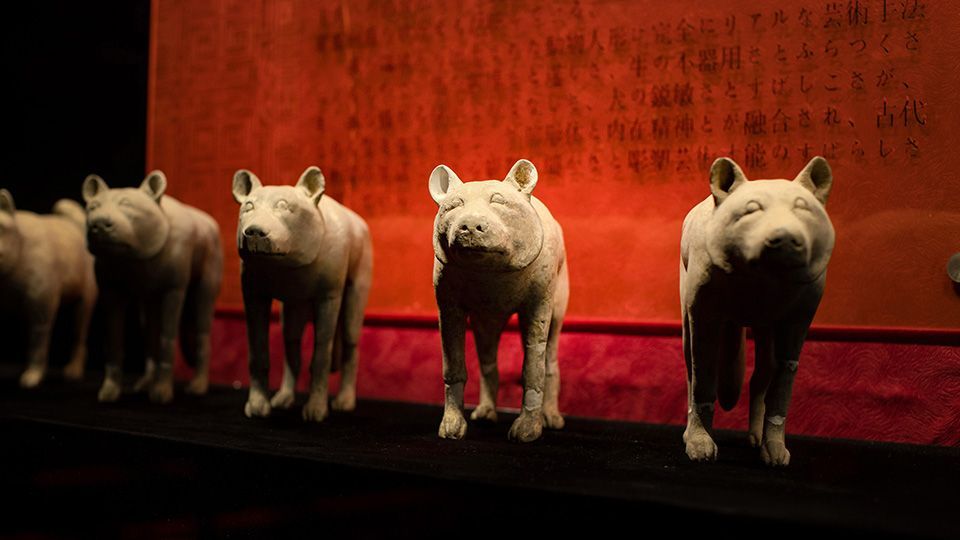A 2,000 year-old army and light shows: Shaanxi is where the past and present meet
4 Years, 3 Months, 1 Week, 2 Days, 16 Hours, 6 Minutes ago
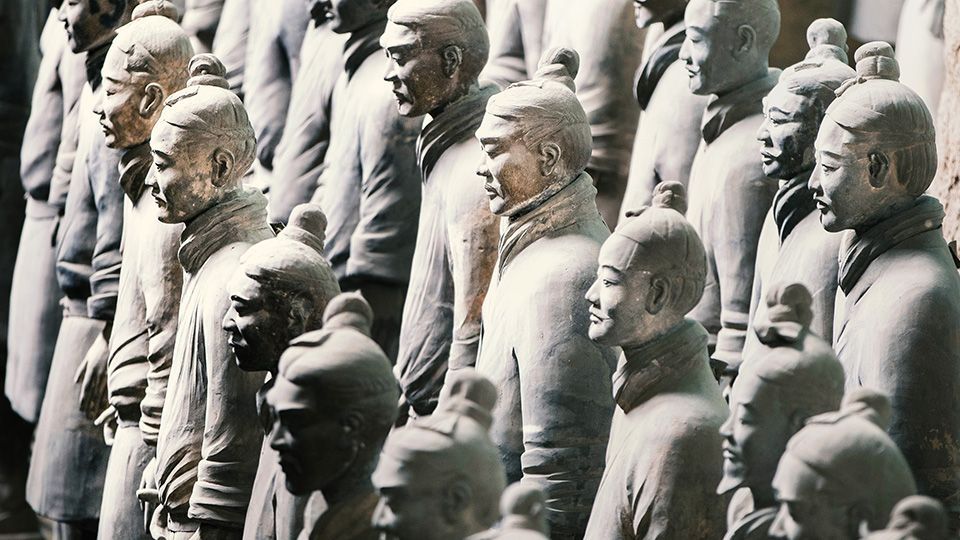
The world-famous Terracotta Army was constructed to accompany the tomb of China's first emperor as an afterlife guard. The site houses thousands of detailed life-size terracotta soldier models to represent the guard troops of the first emperor Qin Shi Huang. They were moulded in parts, fired, assembled and painted. The museum consists of three vaults and an exhibition hall, and the best views are from the front of the vault around the corners.
Excavated from 1974 to 1984, these bronze models of chariots and horses are one of the artefacts you can see at the Terracotta Army. The models depict a driver standing before an umbrella as he commands the horses with the reins in his hands. Decorated with engravings and gold and silver ornaments, this artefact is just one of the many exhibits included in the exhibition hall. The two vaults around it are arranged in strict accordance with the ancient directives on the art of war – facing east towards the ancient enemies of Qin state (and towards the entrance).
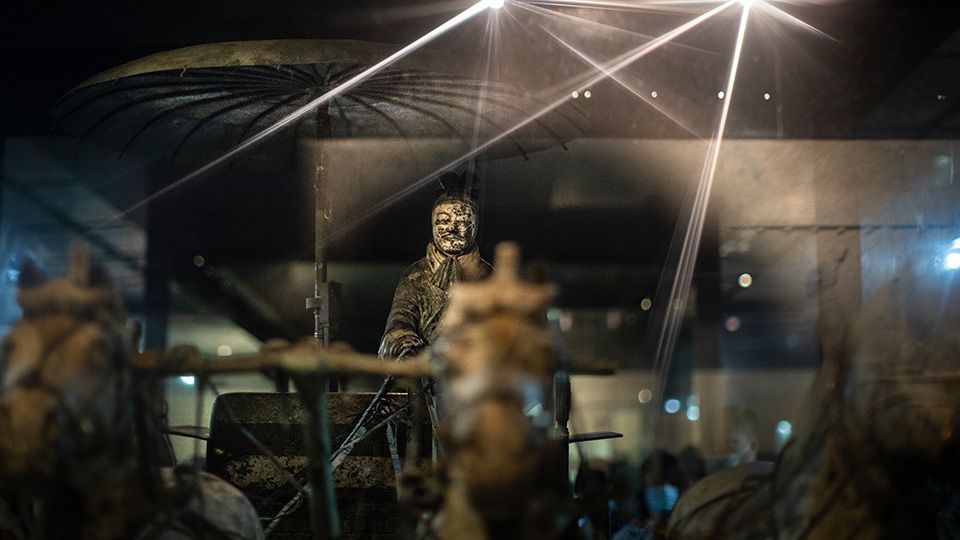 All soldiers here face east in a rectangular arrangement which also reflects military strategy. Each one of them is armed with a long spear, dragger or halberd. Every figure differs in facial features and expression, clothing, hairstyle and gestures, providing abundant and detailed artefacts for the study of the military, cultural and economic history of that period. Historians believe the soldiers' faces were modelled on actual humans.
All soldiers here face east in a rectangular arrangement which also reflects military strategy. Each one of them is armed with a long spear, dragger or halberd. Every figure differs in facial features and expression, clothing, hairstyle and gestures, providing abundant and detailed artefacts for the study of the military, cultural and economic history of that period. Historians believe the soldiers' faces were modelled on actual humans.
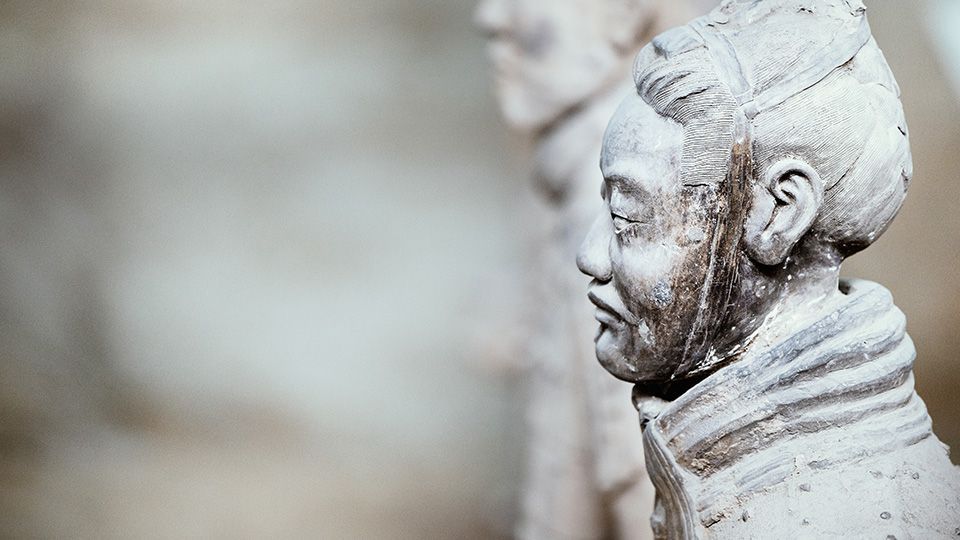
The Shaanxi History Museum is an opportunity for travellers to get an overview of thousands of years of Chinese history as it includes more than 1.7 million exhibits. In this image, painted pottery depicts the honour guards of the Ming Dynasty (1368-1644). At the time of their creation, these figures were adorned with flags, banners, musical instruments, festive lamps, circular fans and more – all of which have since been lost to the sands of time.
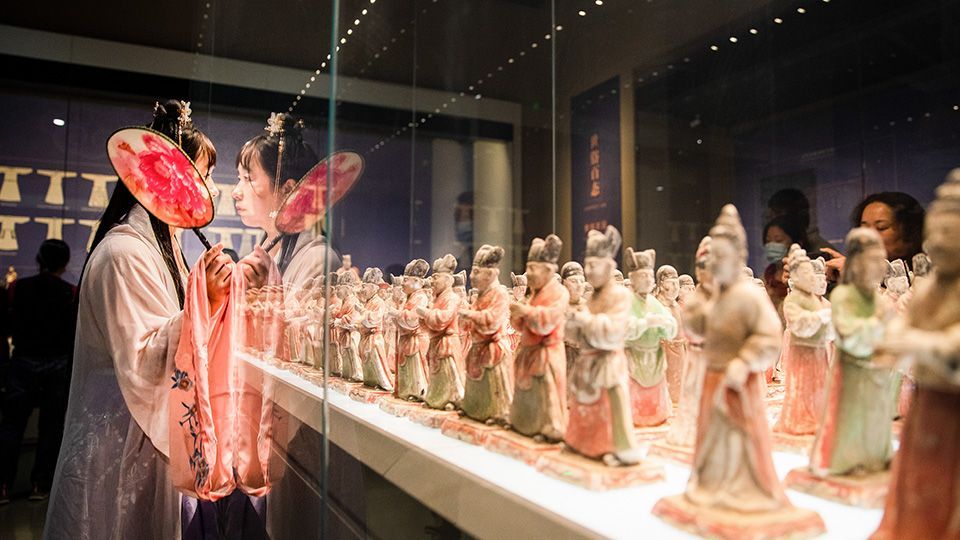
Another exhibit in the Shaanxi History Museum is this uniquely designed object. Called the 'Gold Beast Ornament', this artefact dates back to the Han Dynasty (206 BC - 220 AD) and was excavated at Shenmu City. Historians believe this was a crown decoration for the ruler. Crafted in gold and silver, the ornament shows animal shapes, which some historians have surmised might be a clue to the early Chinese culture of zoolatry (the worship of animals).
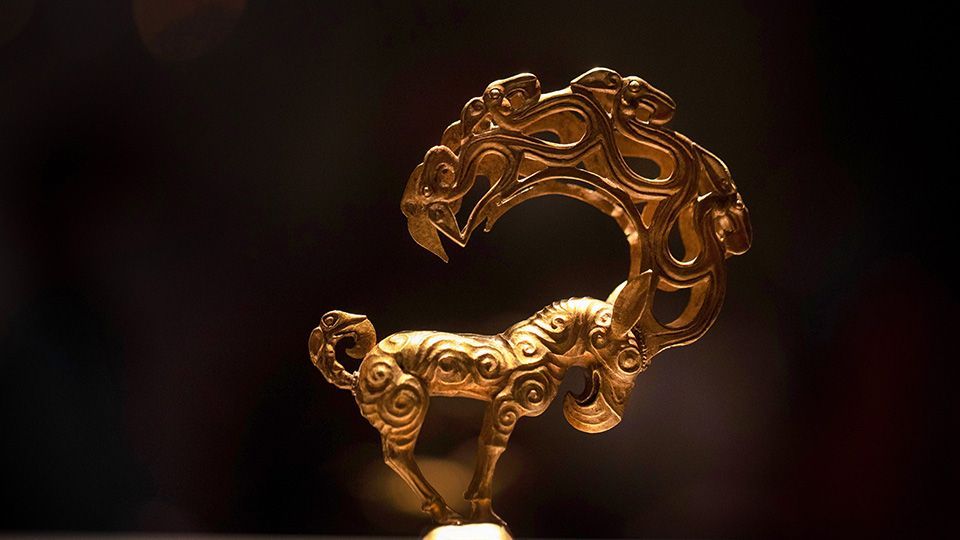
Here we see one of the exhibits at the Stele Forest or Xi'an Beilin Museum, a museum for steles and stone sculptures in the Beilin District. Called the “Seated Avalokiteshvara”, this artefact dates back to the Tang Dynasty (618 AD - 907 AD). The Bodhisattva is seated on an elaborately carved and hourglass-shaped lotus base, and wears a crown on which a meditating Buddha sits. His right and left hands are placed in front of his belly, while holding a lotus bud and his eyes are slightly closed. The sculpture is unique and a must-see for travellers because of its representation of inner spirituality and as a model of the highly skilled carving style of Tang-era sculptors.
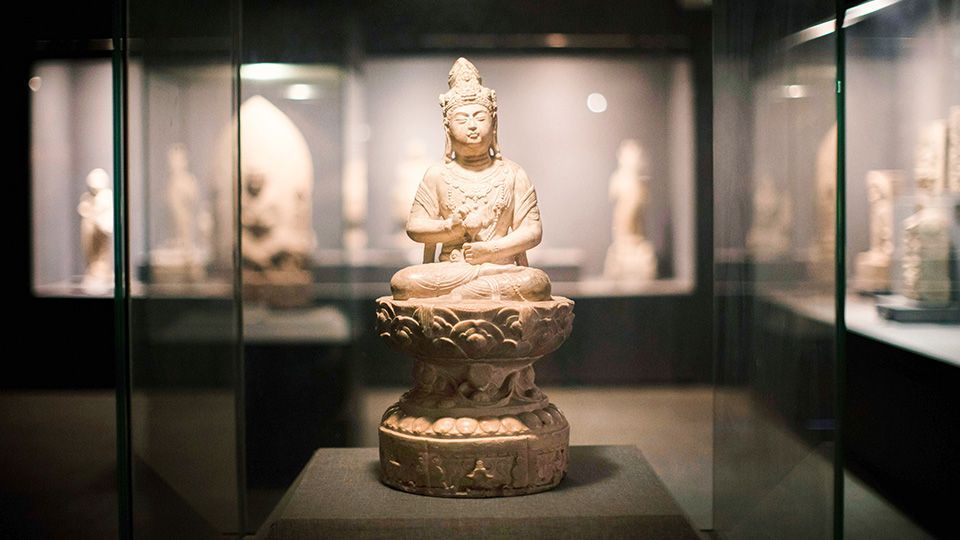
The Xi'an Beilin Museum also includes exquisite Buddhist stone sculptures, including the one shown here. The “Statue of Maitreya” from the Northern Wei Dynasty (386 AD - 534 AD) is a valuable relic that allows historians to study the development of Buddhist stone sculptures in China. Found in Tianhe, Northern Zhou (557 AD – 581 AD), this sculpture is one of the museum's collection of steles (inscribed historic stones or slabs), the largest one in China. There are 4,000 steles in the museum, which is divided into seven exhibition halls which mainly display works of calligraphy, painting and historical records.
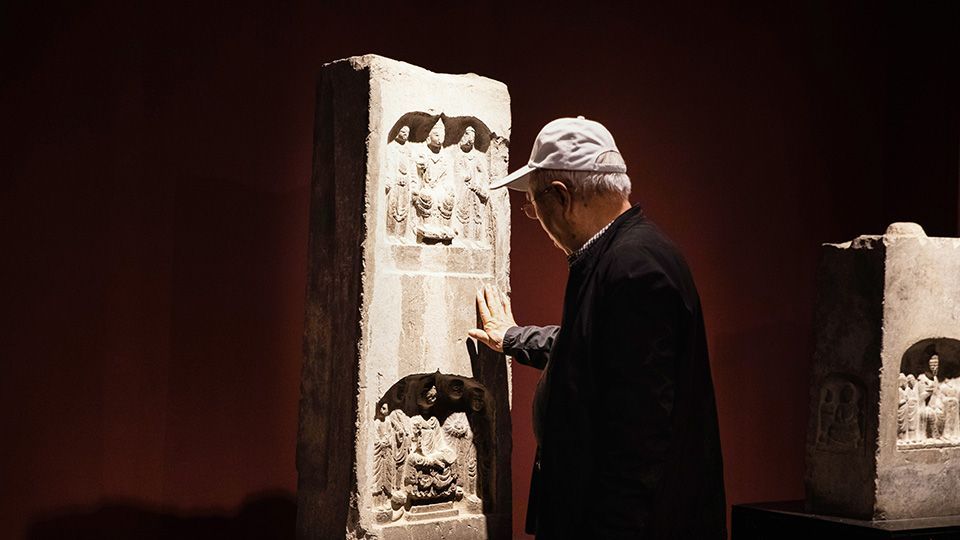
Another unique aspect of the Xi'an Beilin Museum is its collection of Chinese calligraphy. This image shows an amazing example of this collection – calligraphy by Ma Dezhao, a Chinese calligrapher who lived during the Qing Dynasty. The calligraphy translates to “shou”, the character for longevity. That is why it is written with one single stroke, which expresses a wish for a long, uninterrupted life.
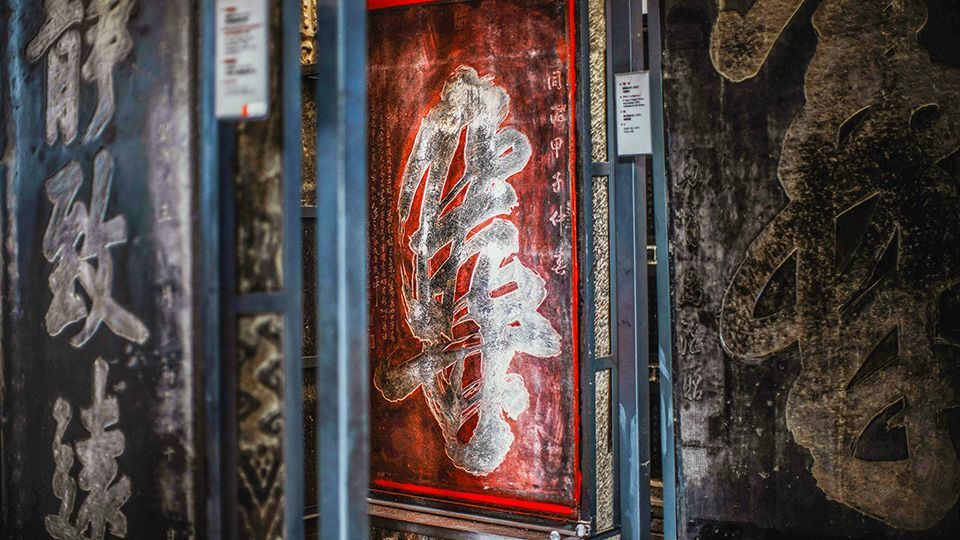
For travellers looking for the buzz of a city, Datang Everbright City is a must-see. The road starts at the Xuanzang statues at Dayan Pagoda and extends all the way down to the Tan Dynasty-era city wall at its south, culminating in an amazing view of the Great Wild Goose Pagoda. The road is a perfect combination of local flavour and spectacle. We recommend visiting in the evening so you can not only partake of the street food, but also see the light show which kicks off at sunset. Electric lights decorate the street foliage and street performers dressed in beautifully embellished costumes line the road.
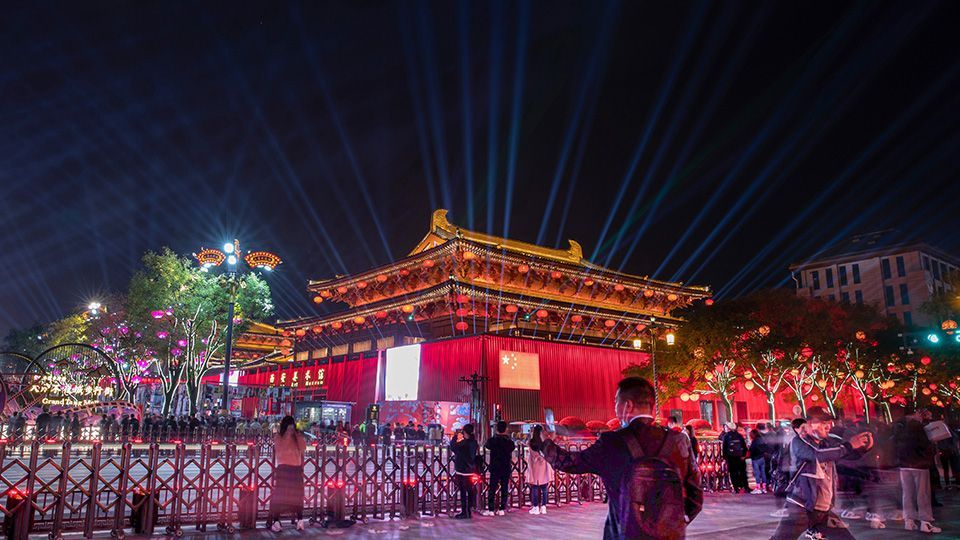
The Great Wild Goose Pagoda was originally built in 652 AD during the reign of Emperor Gaozong of the Tang Dynasty (618 AD - 907 AD). The monument is a symbol of the ancient Xi’an and a holy spot in Buddhism. Standing in the Da Ci'en Temple complex, the pagoda was constructed without any cement. The traditional Chinese architectural style of brackets can also be seen. The grand body of the pagoda with its simple style and high structure acts as an excellent example of Chinese traditional architecture.

The city wall of Xi’an is the largest and – after reconstruction – the most complete city wall in China. Stretching 13.74km, the wall completely encloses the old city centre in a rectangular shape. Visitors can stroll, cycle or even take a buggy around the wall’s entire length. But walking next to it can also be a unique experience for travellers as it is paired with the light show and street dances.

The Bell Tower marks the geographical centre of the ancient capital. It was built in 1384 AD by Emperor Zhu Yuanzhang as a way to look over the surrounding countryside and provide an early warning of attack by rival rulers. Another purpose was to announce the time to the citizens. The wooden tower, which is the largest and best-preserved of its kind in China, is 36m high. It stands on a brick base 35.5m long and 8.6m high on each side. During the Ming Dynasty, Xi'an was an important military town in north-west China, a fact that is reflected in the size and historic significance of the bell tower. In this photo, we can see the tunnel leading to the bell tower at the end of the road.
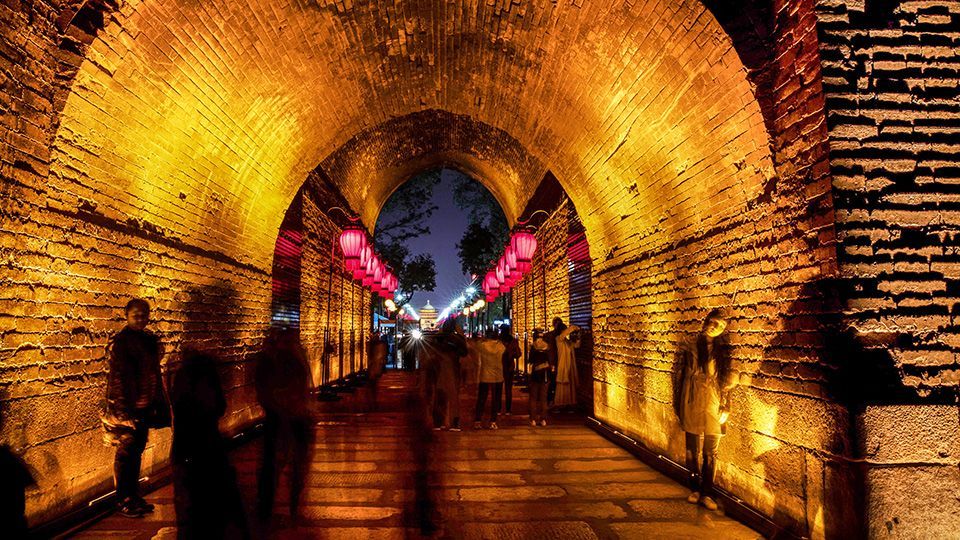
Like many other Chinese clock towers, the Xi'an Bell Tower was mostly used for reporting the time and publishing the news in ancient times. These days its traditional functions have been gradually phased out. Now the bell tower is open to visitors and surrounded by modern shopping malls and busy traffic. When night falls, the Xi'an Bell Tower reveals its true beauty with bright lights, making the evening the best time to visit.
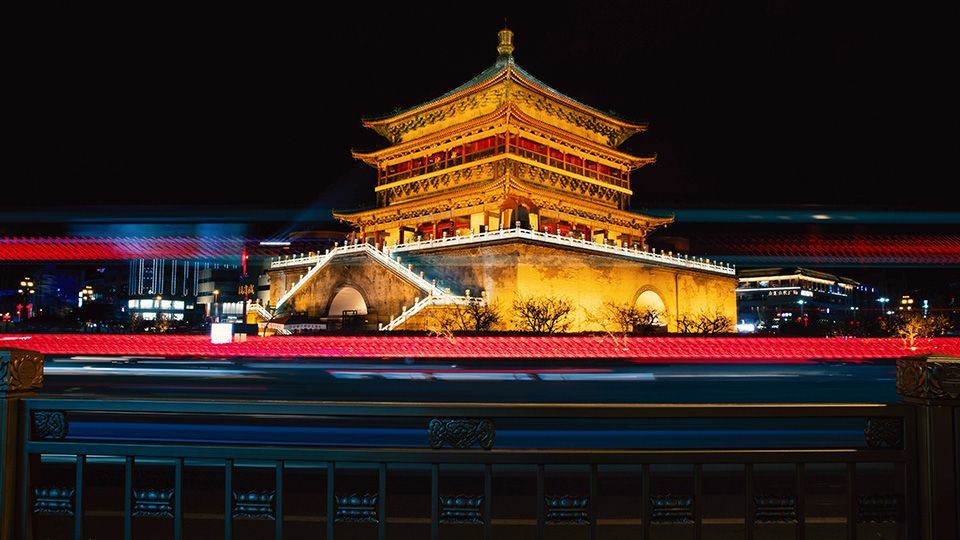
The Han Yang Ling Mausoleum is located at Zhangjiawan Village, about 20km north of Xi'an. It is a joint tomb of Han Jingdi, the emperor of Jing, an emperor of the Western Han Dynasty (202 BC - 8 AD) and his empress Wang. The tomb was built in the year 153 BC and covers an area of 20 sq km. Here, we can see some of the ornaments that were placed around the emperor's remains, which include pottery of animals such as pigs and dogs. An interesting facet of this site is a simulated archaeological base, which was launched in 2012. This allows visitors to experience the novelty and adventure of "discovering" ancient relics, and having their significance explained by experts. This experience encapsulates much of what makes Shaanxi an adventurous traveller's dream come true - seeing the past come to life in the present.
